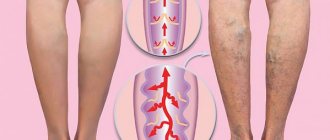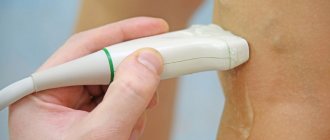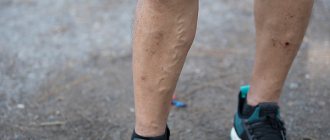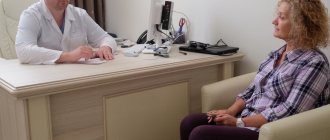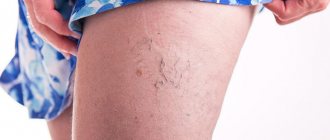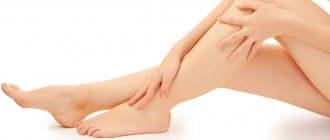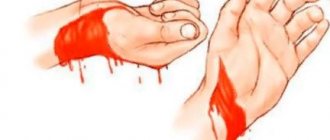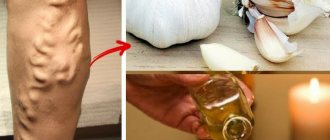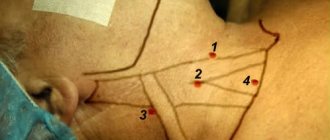Varicose veins are usually understood as a disease characterized by severe deformation of the veins of the lower extremities, which occurs due to thinning of the venous walls and valve insufficiency.
According to statistical data, women aged 30 to 45 years are most susceptible to this disease, which is associated with two factors: genetic predisposition, as well as pregnancy and childbirth, which provoke serious hormonal disorders that can affect the functioning of the vascular system.
Many scientists involved in the study of this issue agree that the basic prerequisite for the occurrence of varicose veins is upright posture. Blood moves through the veins from bottom to top, overcoming the force of gravity, in this it is helped by the muscles of the lower extremities, which contract during movement, and by valves that create an obstacle to possible outflow. When a failure occurs, the blood flows back into the legs, which causes the veins to swell and stretch, and the formation of nodes.
Successful treatment of varicose veins involves establishing the etiology of the disease, since in the future this measure will help develop the necessary preventive recommendations that will significantly reduce the risk of relapse.
Stages of varicose veins
Varicose veins are a disease that develops gradually, going through several stages:
- compensation stage - the body independently copes with varicose veins using internal resources.
- subcompensation stage - the body’s resources for independently combating varicose veins are coming to an end, the disease begins to cause constant discomfort.
- stage of decompensation - the body cannot cope with the problems that arise as a result of varicose veins, the disease is fraught with serious and even life-threatening complications.
If you pay attention to the very first symptoms of varicose veins, then treatment will be most effective and will not require serious intervention in the body. If you miss the symptoms of varicose veins in the legs at an early stage, you will need longer therapy and, possibly, even surgery to remove the veins.
Symptoms at the initial stage
Varicose veins at the very beginning of the development of the disease may not appear externally. There are no tortuous or knotty veins visible on the legs, and this is what can “put the vigilance to sleep.” And leaking capillaries are perceived solely as a cosmetic defect.
However, it is not. Be aware of the following symptoms of varicose veins in the legs:
- heaviness in the legs
- swelling that increases towards the end of the day, but goes away after a night's rest
- burning in the feet, feeling of fullness, “humming” of the legs, periodic night cramps in the legs
- increased leg fatigue
- appearance of spider veins and capillaries
If you contact a phlebologist with these symptoms, without waiting for the veins to clearly protrude under the skin, treatment may be limited to the most gentle option - sclerotherapy. Attentive attention to the early symptoms of varicose veins will allow you to quickly get the effect of treatment and then only regularly attend preventive examinations.
!We recommend that expectant mothers be especially attentive to the first signs of varicose veins. Since varicose veins often develop during pregnancy, women at this time need to monitor the condition of their veins and take all necessary preventive measures. In particular, wear compression stockings recommended by your doctor.
Varicose veins.
Menopause
Climax
3430 March 23
IMPORTANT!
The information in this section cannot be used for self-diagnosis and self-treatment.
In case of pain or other exacerbation of the disease, diagnostic tests should be prescribed only by the attending physician. To make a diagnosis and properly prescribe treatment, you should contact your doctor. Varicose veins of the lower extremities: causes, symptoms, diagnosis and treatment methods.
Directly varicose veins without chronic venous insufficiency is a chronic disease with varicose veins of the saphenous veins of the lower extremities without the phenomena of chronic venous insufficiency (edema, hyperpigmentation, venous eczema, lipodermatosclerosis, trophic ulcers).
According to statistics, about 30% of middle-aged and older people have varicose veins of the lower extremities.
Often the early stages of varicose veins are missed because the ability to work is not yet impaired and the person is only concerned about a cosmetic defect.
Later stages of chronic venous disease significantly reduce quality of life and require long-term treatment.
Causes
There is no exact answer to the question of the reasons for the development of varicose veins, but it has been established that hereditary predisposition plays a significant role. Scientists have identified gene sections that are responsible for changes in the structure of the venous wall.
The development of the disease is based on a violation of the venous outflow in the lower extremities. With healthy hemodynamics, blood moves from the legs to the heart due to the pumping (pulling) function of the heart, contraction of the muscles of the lower extremities and venous valves.
An important mechanism for the development of varicose veins is disruption of the valvular apparatus of the veins.
In this case, a reverse discharge of blood occurs under the influence of gravity down the venous bed, or venous reflux. Gradually, blood stagnation occurs, causing expansion of the saphenous veins.
Classification
Doctors use the CEAP classification of chronic venous diseases. Each letter in the abbreviation indicates a specific section of the classification.
The letter “C” codes for the clinical class of the disease.
- C0 – there are no manifestations of the disease.
- C1 – the appearance of telangiectasia and reticular varicose veins (reticular veins are medium-sized vessels, larger than capillaries). Telangiectasia is an expansion of venules that are located deep in the skin, and reticular varicose veins are an expansion of veins up to 3 mm in diameter.
- C2 – varicose veins of the saphenous veins more than 3 mm.
- C3 – the appearance of edema of the lower limb.
- C4a – the above symptoms are accompanied by trophic changes in the skin in the form of hyperpigmentation (darkening of the skin area) and/or varicose eczema (damaged areas of the skin with blisters and weeping).
- C4b – lipodermatosclerosis (varicose dermatitis) – excessive skin thickening and/or white skin atrophy (formation of small white scars).
- C5 – healed trophic (venous) ulcer.
- C6 – open (active) venous ulcer.
The letter “E” in the classification stands for etiology, or cause of the disease.
- Ec is a congenital disease.
- Ep – primary disease.
- Es – secondary varicose veins as a consequence of another pathology, for example, due to occlusion by a venous thrombus or due to trauma.
- En – the cause of varicose veins has not been established.
The next letter “A” indicates the anatomical localization of the pathological process.
- As – superficial veins are affected.
- Ap – perforating veins connecting the superficial and deep veins of the lower extremities are affected.
- Ad – deep veins of the lower extremities are affected.
- An – changes in the venous system cannot be detected.
The letter “P” denotes the pathophysiological section of the classification, which reflects the characteristics of hemodynamic disorders in the veins of the lower extremities.
- Pr – reflux.
- Po – occlusion, or blockage of the lumen of a vessel.
- Pr, o – a combination of reflux and occlusion.
- Pn – it is not possible to detect changes in the venous system.
Symptoms of varicose veins
One of the first symptoms that attracts attention is the expansion of small veins and venules in the form of stars (telangiectasia and reticular varicose veins).
Then, a feeling of tightness and squeezing appears in the legs, itching and burning in the legs and ankles, as well as dryness and flaking of the skin of the legs often occur.
These symptoms are caused by gradually developing stagnation of blood, lack of oxygen in the tissues, as well as a delay in the removal of metabolic products from the tissues.
A common symptom of varicose veins is swelling: marks from shoes and elastic socks remain on the skin. With a progressive deterioration in blood outflow, throbbing or aching pain, muscle spasms appear, and leg cramps may occur at night.
In advanced cases, in addition to the indicated symptoms, the color (pigmentation) of the skin in the area of the legs and ankles changes to brownish.
Sometimes local redness of the skin develops and the risk of developing trophic ulcers in this area increases.
A trophic ulcer is an extreme degree of skin malnutrition and often occurs as a complication of varicose veins. The term “trophic” indicates that the ulcer arose as a result of tissue malnutrition and in the affected area the ability to heal independently is sharply reduced. This is why trophic ulcers are extremely difficult to treat, and chronic infection in this area can lead to the development of dermatitis and eczema. In severe cases, the purulent process can spread deep into the tissues, affecting the subcutaneous tissue and muscles.
Trophic ulcers occur in chronic venous insufficiency.
Diagnostics
Primary diagnosis of varicose veins of the lower extremities is primarily based on the patient’s typical complaints and external manifestations:
- Heaviness in the legs;
- Rapid fatigue of the legs;
- The appearance of edema;
- Itching, burning, numbness, cramps;
- Enlarged veins visible to the naked eye (“stars”, varicose veins, swollen veins on the legs);
- Changes in skin color and structure;
- Long-healing ulcers.
The diagnosis is confirmed using instrumental examination methods and excluding other causes of dilated veins.
- Ultrasound of the veins of the lower extremities (Doppler);
The disease progresses: main symptoms
Very often, we mistake early manifestations of the disease for signs of leg fatigue: the symptoms of varicose veins on the legs really resemble the condition after prolonged exercise. However, you should be wary of the fact that the “fatigue” of the legs repeats again and again.
If varicose veins enter the subcompensation stage, then convoluted, convex veins and bluish venous nodules become clearly visible under the skin. Pain is added to the feeling of heaviness and fatigue in the legs. Swelling of the legs, which at an early stage went away during a night's sleep, now persists even after rest. Night cramps are becoming more common.
Seeing a doctor with such symptoms of varicose veins of the lower extremities requires more serious treatment. You may need not only sclerotherapy, but also laser treatment (EVLT) or radiofrequency ablation (RFA). For each patient, the phlebologist develops an individual comprehensive therapy program.
Why do veins appear on the legs?
Before we answer this question, let's clarify what veins are in the legs.
In the thickness of the muscles there are vessels that are called deep. Superficial veins run closer to the skin. Conventionally, we can say that the main work of blood transfer is performed by the deep veins, and the superficial ones “help” them. Blood flows through the veins from bottom to top, that is, overcoming the force of gravity. This movement is ensured by the work of the muscles - they act as a kind of pump (doctors even talk about the so-called “peripheral heart”). And to prevent blood from flowing back down, there are special valves in the walls of the veins that close the lumen.
If a person constantly experiences static loads (for example, works in a standing or sitting position without changing it), blood stagnation occurs in the veins, its walls stretch, and the vein valves no longer close tightly. The blood partially begins to flow back, stretching the vascular wall even more, the vein expands and becomes clearly visible under the skin. Many people pay attention to the fact that a vein in the leg is protruding, and only then do they think about contacting a specialist.
In addition to static loads, factors that cause the development of varicose veins include taking hormonal drugs, pregnancy, childbirth, heavy lifting, heredity and others.
Symptoms of varicose veins at a late stage
If the disease has reached the stage of decompensation, then the symptoms appear so clearly that seeing a doctor becomes vital. At a late stage, varicose veins are dangerous for the development of dangerous complications, so treatment should be started immediately.
If varicose veins are in the stage of decompensation, then in addition to the existing symptoms: pain and heaviness in the legs, swelling, cramps, itching, a change in skin pigmentation is added, it acquires a bluish or brown tint. Stagnation of blood in the veins leads to disruption of tissue nutrition, resulting in trophic disorders. Ulcers, weeping spots, poorly healing or non-healing wounds appear on the skin.
If such changes begin, then varicose veins can be treated only after the wounds on the skin have been healed. Thus, the total duration of treatment increases markedly. As for varicose veins, they may require surgical removal.
Hippocrates said: “Both success and failure in treating a disease must be attributed to both the doctor and the patient.” If you are attentive to your health, then do not miss the first symptoms of varicose veins, consult a doctor in time and you will be able to maintain the health and beauty of your legs for a long time.
The most common causes of varicose veins are:
- Hereditary tendency.
In most cases, the pathology of valve development and weakness of the connective tissue of the venous walls are transmitted genetically; - Lifestyle.
Physical inactivity and prolonged stay in an upright position, inherent in a number of professions, lead to blood stagnation;
- Pregnancy and childbirth.
The growing fetus compresses the veins, interfering with the outflow of blood, and hormonal changes reduce the tone of the vein walls, making it difficult for the valves to close;
- Excess weight.
Excess body weight puts excessive stress on the lower limbs and causes blood flow problems;
- Bad habits.
Poor nutrition, smoking, alcohol, and constant wearing of high-heeled shoes also contribute to the development of the disease.
At the initial stage, only a highly qualified doctor can make a correct diagnosis, since all the symptoms of varicose veins are extremely nonspecific and are often attributed to arthritis, osteochondrosis and flat feet.
